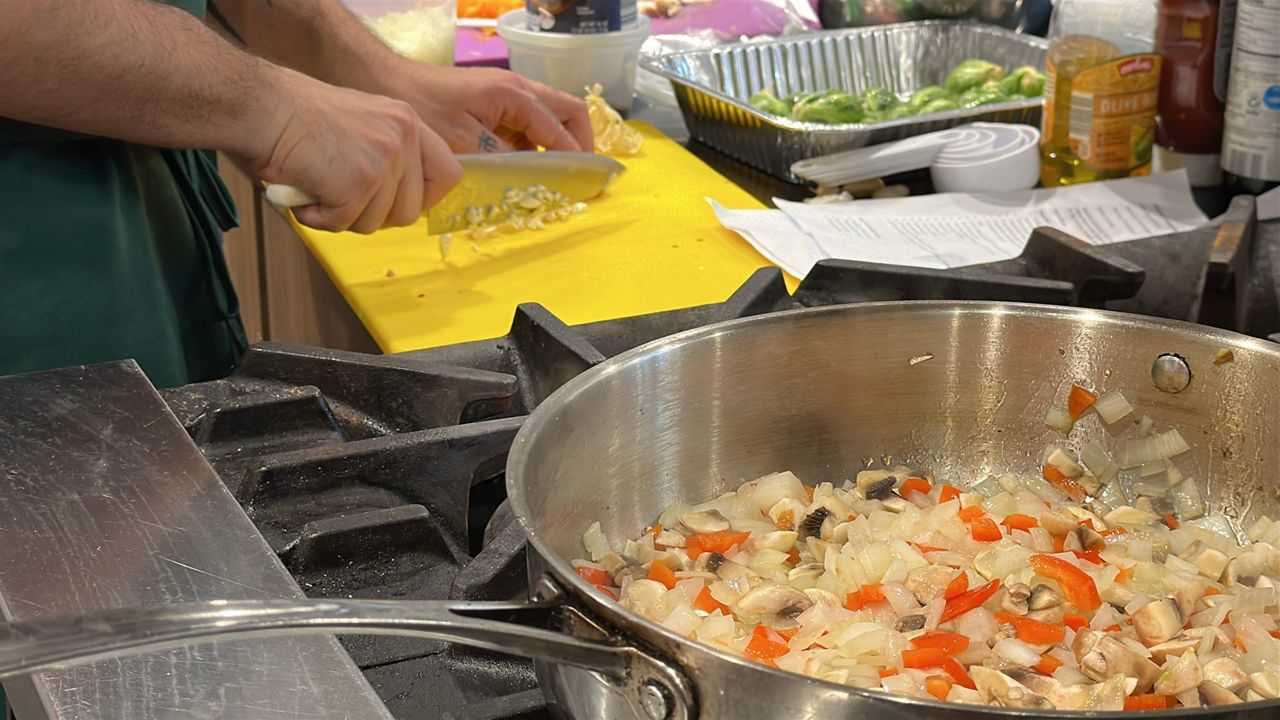
More than 10% of New York adults are living with diabetes. Outside of New York City, Orleans, Chautauqua, and Niagara counties are where diabetes is most prevalent, according to the New York State Department of Health.
For some people with chronic conditions like diabetes, what they eat matters. How can healthier meals be incorporated into daily diets? The answer might be simple substitutions.
Healthy cooking can have hurdles like what to buy at the grocery store, how to use a chef’s knife, and how to make healthy substitutions in a recipe. There’s a class that takes all those barriers away.
“Make healthy eating easy. That was our mission, to introduce these options and show that it doesn’t have to be tough to eat healthy,” said Heather Dorsey, an adult medicine outpatient dietician with Nappi Wellness Institute at Upstate Medical.
Jess Miller knows the difficulties of shopping for a meal to accommodate a chronic condition like diabetes.
“It’s overwhelming to get into that grocery store and be like, I have to think about food portioning. You have to be strategic in the way you eat with diabetes. You’ve got to make sure that your protein and your carbs are working together,” said Miller.
Her organization, the Syracuse-based Kitchen Literacy Project, has a new program teaching how to use food as medicine.
“It’s one thing to educate somebody on the kinds of foods that you can eat for your overall health. It’s another thing to do so in a way that will make them want to eat it. And I think this program does that,” said Danielle Johnson, senior director of grants and programs with Central New York Community Foundation.
CNYCF provided a $13,000 grant to the Kitchen Literacy Project.
“We want to slow that progression so that they don’t have more obstacles later on in life. And also, we want to teach it so that they can pass it on to the rest of their family and friends so that they can ward off these, potential diseases,” said Dorsey.
Dorsey, a dietician at Nappi Wellness Institute, says there are simple things anyone can do to improve their diet.
“Increasing your fiber, watching your sodium and picking healthier fats,” said Dorsey.
Local chefs teach students knife skills and healthy alternatives for meals they enjoy like macaroni and cheese and meatloaf. Franchesca Clemente is learning with her mom.
“Her conception of clean eating is no flavor. And this class has challenged that,” said Dorsey. “We want her to be healthy and live a life that she wants to live and not be sick and not have to worry about her diabetes. And so in that way, this is setting the foundation for her to do that.”
They use affordable ingredients in their recipes.
“It’s scary to try something and spend money on it, knowing that the economy is the way that it is, and then not like it or not know how to cook it or not know what to do with it,” said Dorsey.
The Kitchen Literacy Project plans to hold another round of classes to teach healthy eating in the fall. According to the DOH, outside of New York City, diabetes is the least prevalent in Tompkins, Saratoga and Putnam counties.
